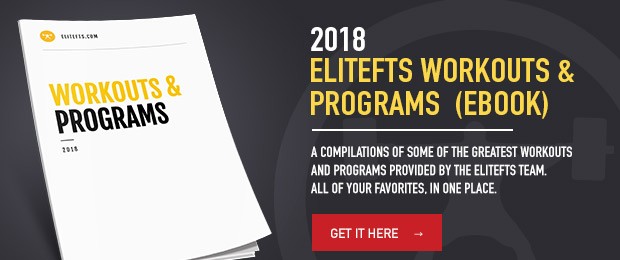
Introduction: An Exercise on Application
“Do you actually use this in your life?”
For almost a year now, I have been exploring the concepts and research related to the broad idea of “motivation” (see the full list of articles at the end of this one). Hopefully, I have also been contributing to debunk harmful, simplistic, and moralistic pop psychology platitudes about these ideas. The more people understand that these non-technical “opinions” are bad, the more they will be encouraged to find out what science has offered in that field. In doing so, they will obtain the tools for better decision-making.
Sometimes it is confusing, especially in areas where there is not enough consensus. That’s where the question comes from: how do I deal with it? Does it work the way the models predict?
Yes, and when I do, it works. When I screw up and fail to follow appropriate methods, unsurprisingly, I get bad results. Why in hell, then, would I fail to do it? Oh, I can make a long list of reasons I am conscious of, and there is an even longer one that I am not conscious of.
RECENT: The Role of Self-Regulation and Control in Sport Performance
In my last article, I introduced the concept of “ego depletion”, the fatigue experienced when exercising executive functions for too long. That is usually the main reason I and lots of people quit following a plan. The next most relevant reasons to abandon a structured goal-oriented path are catastrophic circumstances. By “catastrophic” I mean disruptive life events. They can be positive, like an unplanned (but welcome) pregnancy, an unexpected work opportunity pulling you to a whole different career path, among others. They can also be horrible, such as the onset of a chronic illness, a disabling injury, the loss of a loved one or being fired.
Finally, straying away from a goal-oriented path can be the result of pure lack of self-monitoring. Self-regulation has a cost, and it is not a small one. Even to minimize this cost, by re-inserting automatic behavior and routine in your life, there is a period of costly self-regulated investment.
When we are younger, absorbing disruption is easier because disruption is less damaging. There is more absolute time to re-frame plans. As we get older, we can no longer afford it.
Here’s what I am going to cover in this article:
- Goal setting and time framing
- Monitoring (“project management” for real life)
- The importance of journaling
Planning
My child was a planned one. Because I had no children before, I failed to take other timelines into account. Here’s where we talk about project and sub-project integration. Let’s say “meaningful life” and “building a positive legacy” are top-level goals, “intellectual legacy” a second-level goal; and “having a child” also a second-level goal.
You quickly discover that having a child is much more complex than that. It also has deadlines. Since I was done with the experimental work for my Master’s degree thesis and had also passed the qualifying exam at the time I got pregnant, I was sure everything was under control. Not so much.
The delivery was predicted to take place by the end of June 1989. I figured the thesis had to be defended “up to June 23rd”, optimally in April or May.
Here is how you calculated theses and dissertations deadlines then. Take into account that when they had to be “typed and printed” (as in “on a typewriter”) instead of done on a computer, all the periods were extended:
- Date 1: Day of the defense
- Date 2: Day the committee and libraries receive their copies (15 to 30 days before the defense)
- Date 3: Day the candidate hands in the six to eight printed copies at the Graduate Office (seven to 15 days before the committee and libraries receive their copies)
- Date 4: Day the candidate must have a revised and approved copy of the manuscript to make the official copies from (one to five days before Date 3)
- Date 5: Day the candidate hands in the edited draft to the typist to type the thesis (usually seven days) / day the candidate hands in figure drafts to a professional designer (from seven to 14 days)
- Date 6: Day the advisor must receive the last edited version of the thesis/dissertation manuscript for approval (that depends, but at least 30 days)
- Date 7: Day the candidate must have the first version of the thesis/dissertation (at least four months before Date 5)
- Date 8: Day the candidate must start to work on the thesis/dissertation manuscript (from three to six months before Date 7)
We have between nine to 14 months between Date 8 and Date 1.
Problem: I got pregnant in October. Do the math. I had to work faster than these deadlines. I did, I defended my thesis in May 1989, and my daughter was born in June 1989.
Now let’s think sports. Take a look at these three random competitive program parts I designed for athletes:
Athlete A: Male, 20 years old, elite powerlifter, no injuries. We had five months to work towards an all-time record goal in September. We count backward from the competition date to the week we start working. The goals of the first mesocycle (or block, or whatever you want to call it) are different than the ones set for the second mesocycle. In the first mesocycle, we had to deliberately hold back on intensity. Final goal: achieved.
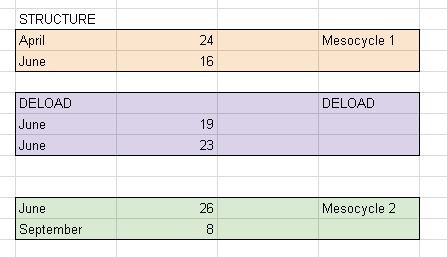
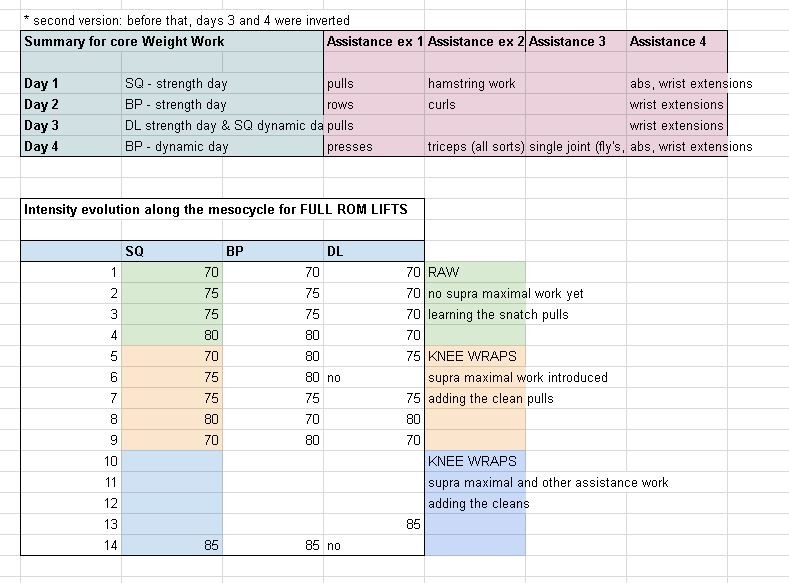
Athlete B: Male, 20 years old, novice powerlifter, elbow injuries and technique issues. We had 11 weeks to work toward a State-level competition. Supra-maximal partials supplied what near maximal full range of motion couldn’t because of the injuries. Final goal: achieved.
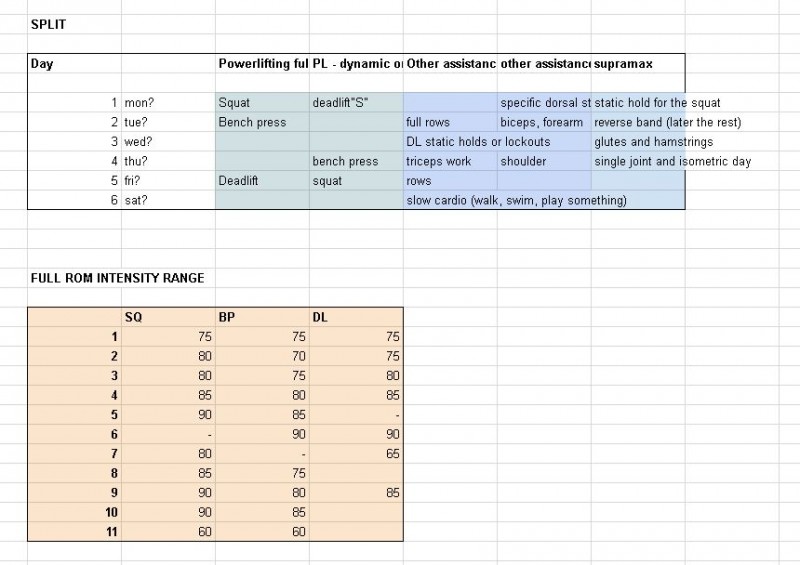
Athlete C: Me (female, 52 years old, injured, coming from a world championship in the USA, where it was winter and training in Brazil, where it was summer). I had only six weeks to prepare for RUM-8. Goal achieved (1st in the weight class, bench press best lifter, 6th all-time best bencher).
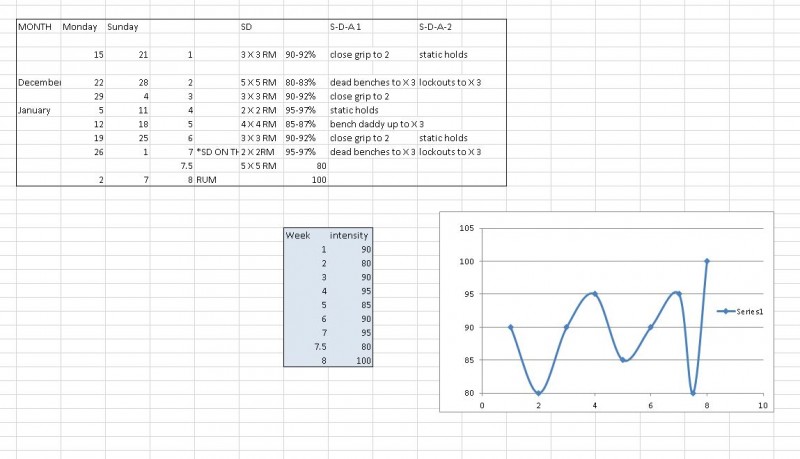
Now let’s think complex project management. Below is the time-framework structure for a project I was principal investigator of about intellectual property rights in biotechnology, funded by one government agency and the Ford Foundation (around 2001). Phases 1 to 4 correspond to the acquisition of data banks and preliminary analysis, sample design and survey pre-test, institutional structure analysis and quantitative and qualitative study. Goal achieved.
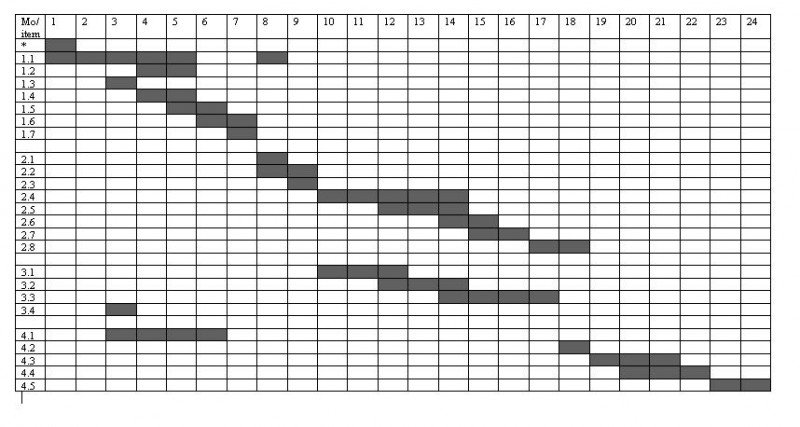
Grants, fellowships and scholarships must be proposed according to a hierarchical, clustered, and nested system of goals, sub-products, and evaluation milestones. Each funding agency has a project proposal model, but they all cover more or less the same items. When you are mature enough to lead your own team (“principal investigator”) and sign your own grants, you have already managed at least two scholarships. I’ve seen plenty of mediocre and bad scholars. I even met some that cheated on their results and reports, but I have never met one who failed on meeting those deadlines. The reason is simple: if you don’t comply, you must return all the money you received and say goodbye to your career forever.
Actually, I don’t remember my life before it was essentially organized in “title” (which contains one of the higher goals), “introduction”, “literature review”, “materials and methods”, “objectives (three levels)”, “timeline” and “budget”.
This article is not about sports programming, public policy or thesis advising. It is about goal setting. My point here is that once the goal is established, the way to organize a timeline is practically the same for any project, and life is a project. The answer to the question of whether I apply that to my life is “yes”, I always did.
This is the easy part. The hard part is the one that precedes that. You must answer why these things are being done in the first place. You know, the “why do you lift” part. Or “why (or for what purpose) do you live".
Whether we do it consciously or not, autonomously or not, everything always fits into a bigger plan. The more autonomous we are, the more we make use of our executive functions and the more control we have over everything, including the things we have no control over. Let me explain: there are some extrinsic goals that can’t be avoided. In order to establish any abstract meaningful goal, someone must provide for your survival. If you are an adult, that is usually you. Sometimes that goal trumps all other goals. Frequently, disenfranchised people and very low-income ones don’t have too many options for building their life strategies, long and shorter term-goals and actions under the umbrella of abstract, transcendent, value-laden goals. These lives are chronically disrupted and there are only short-term goals: food, shelter, and clothing, with insecurity defining them.
RELATED: Simple Steps to Reaching Your Ultimate Goals
When I was still young, I was aware that a large part of humanity lived like that while part of us had rights and enjoyed the freedom of choosing abstract goals. I don’t remember how young I was, but it was before age 12. That awareness created the “umbrella-goal” (top-level goal) that I have kept since then: I decided that this was essentially wrong and that the ideal state of any society would be one where everyone was free to make their choices unconstrained by tragically pressing survival needs, political or religious oppression, and pursue whatever they decided to pursue. It didn’t go much further than that, then.
For the first 25 years of my adult life (if we start counting at 18), the goal of making a positive change in society was met through something I could do with reason, science, and education. During those years I accomplished many, but far from all, of the sub-goals I established. If you are 20ish and feel anxious reading this, I sympathize: we live in a complex society where important, impactful goals must be established early and worked on for decades to completion. This conflicts with the fact that, at that age, not even the brain structures responsible for self-regulated behavior are completely developed.
From 2005 to 2015, I had very different sub-goals under the same top-level goal. In 2004, I left Academia. At that moment, contradictions at the practical (action) level were conflicting with the top-level goal, and things stopped making sense. It doesn’t mean I stopped practicing science or valuing reason above most things.
Sports came back into my life as a major component. My first contact with powerlifting was the elaboration of a sports social project for vulnerable youth in a Brazilian slum. Although I had partly transitioned into sports science, not that hard of a task with a biology and biochemistry background, it was still mostly political science and policy-making.
My own athletic career, then, made sense for more than one reason: I lifted because I had found a form of subjective transcendence in lifting. I was able to achieve goals I thought could only be achieved, if at all, through psychotherapy: self-integration, focus, and integrated meaningfulness. It took a radical disruption for me to figure that out. To be an effective game changer in society, I had to be internally coherent and seek autotelic moments of self-fulfillment.
Between 2005 and 2006 I wrote down my goals. Some of them made no sense at the time: I just wrote them down as an exercise of unrepressed desire exploration. I didn’t know what an “all-time-record” was then, but that is what I achieved to satisfy one of the goals years later.
In 2015, my life structure started to erode. At least three completely unpredictable and very disruptive things happened, and by September 2018, there was nothing left. The health consequences of this period of disasters reached a life-threatening point. By then there was no “cross-talk” left in my body: disabling neurologic symptoms, central hypothyroidism, general hormonal imbalance and finally, acute pancreatitis were it. There was only one person both technically qualified to build a tentative diagnosis (physicians were no help and were scared) and invested (“motivated”) in the success of some treatment, any treatment, no matter how wildly experimental it was: me.
I did what I had to do: bury my head into published research until I found clues and moved from that to more clues. At the same time, I had to simplify and control all input. Simplify and monitor diet, sleep, blood work, digestive behavior, pain levels. Evaluate on a daily basis what was possible. I chose a treatment course consisting of hormone replacement, specifically thyroid, a glucose and triglyceride regulating agent, reconstructing gut microbiota balance to reestablish the brain-gut-microbiome axis through specific probiotics and prebiotics, and a radical hypocaloric, low carbohydrate diet. A strict, daily strength training and conditioning regime completed the strategy.
It is radical, not really healthy, but among the bad choices I had, this was the best. I also installed light manipulation software in all my devices, and my circadian rhythm changed overnight. Unfortunately, it didn’t fix the chronic sleep disorder.
This is what I achieved in three months, where the short-term goal was to restore sufficient brain function to, well, function. Honestly, there was no longer-term goal. This is what I achieved:
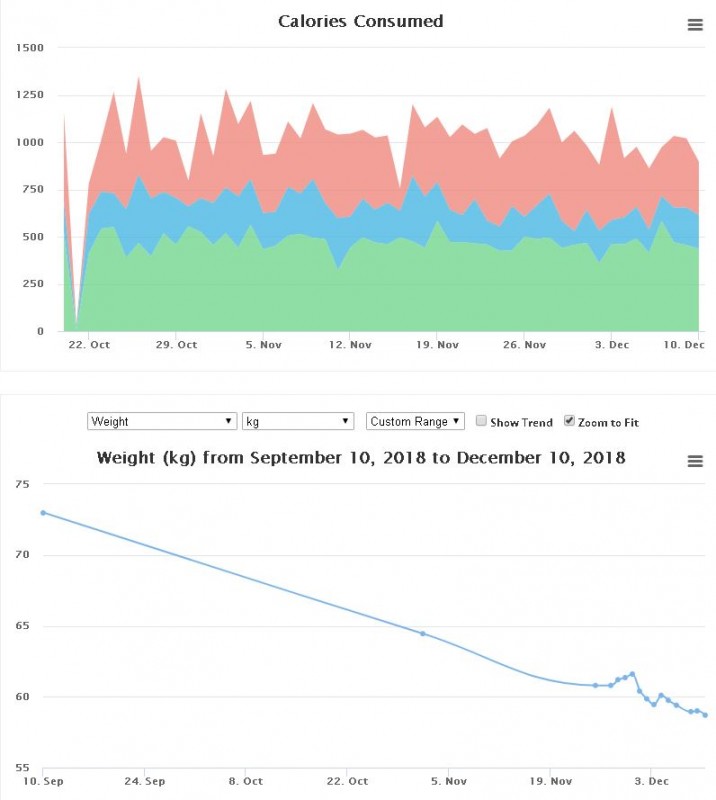
(Green is protein, blue is carbohydrate and red is fat).
The neurological symptoms are under control, the brain fog is gone, pain levels are low, digestion is normal, and I am functional again. Sleep is still not that great. The “good” phase was a bad flu when all I could do was sleep, ingest/digest, and cough.
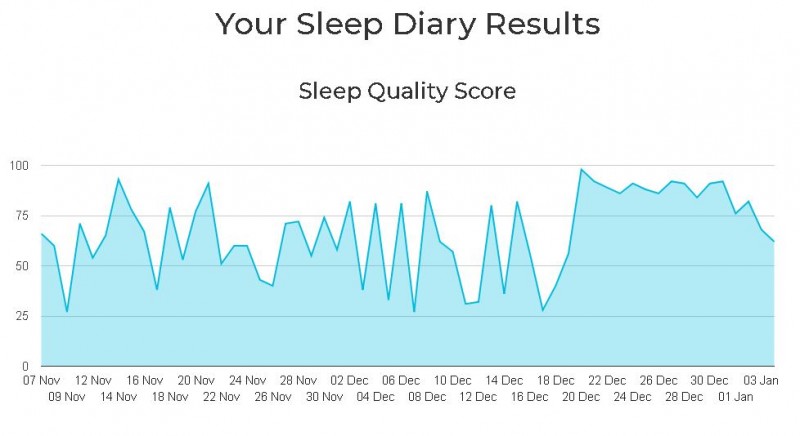
I keep a journal on daily progress in any direction.
Now I’m building my quinquennial plan. You could (because I would) ask: why five years? You started with a 25-year plan, then a 10-year plan and now a five-year plan? That is correct. At 18, a 25-year plan makes total sense. At 55, none.
There’s something else: at 55, with that much damage inflicted to my body and a much smaller range of options, I can’t afford to be reckless and imprecise anymore. The wild days of wild drinking and getting stoned were fun and I miss them. After an acute pancreatitis, three hepatitis, two liver hemangiomas from post-surgical cortisone, it’s really not an option anymore. I love desserts, but with a reactive hyperinsulinemia diagnostic at 16 and refractory atypical epilepsy, it’s time to give up high glycemic sugars for good.
I also can’t afford known stressors, such as ambient music, blinking lights, heat, crowds, among other things.
This is how I am building my new quinquennial (five-year) plan.
During one week, I wrote down everything I wanted or thought important to do, regardless of its class (top-level goal, lower-level goals, actions). I ended up with 55 pieces of paper:
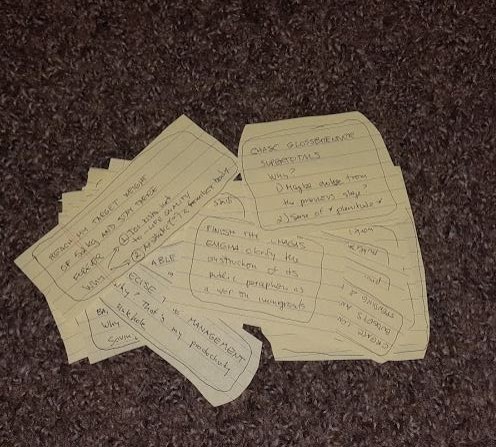
Then I started grouping them in levels:
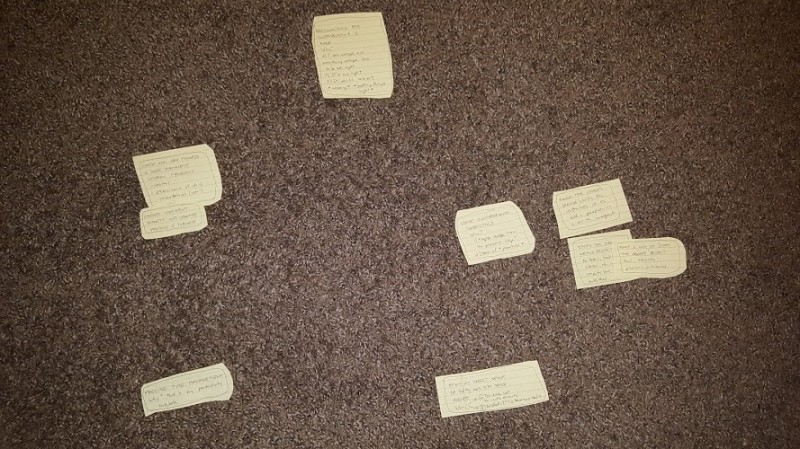
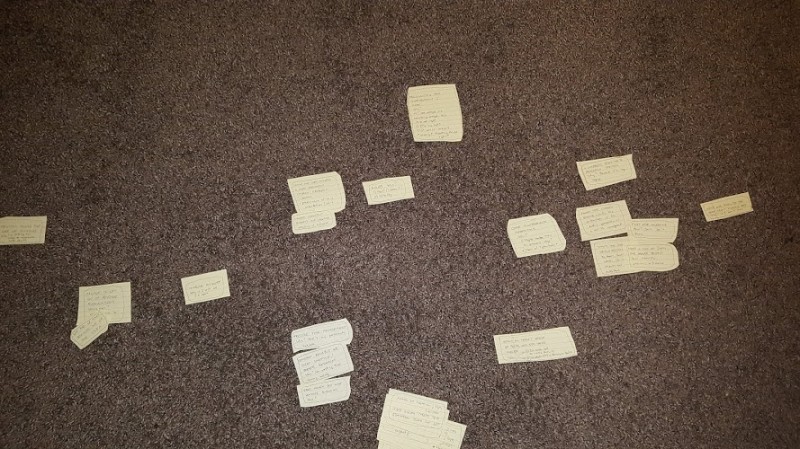
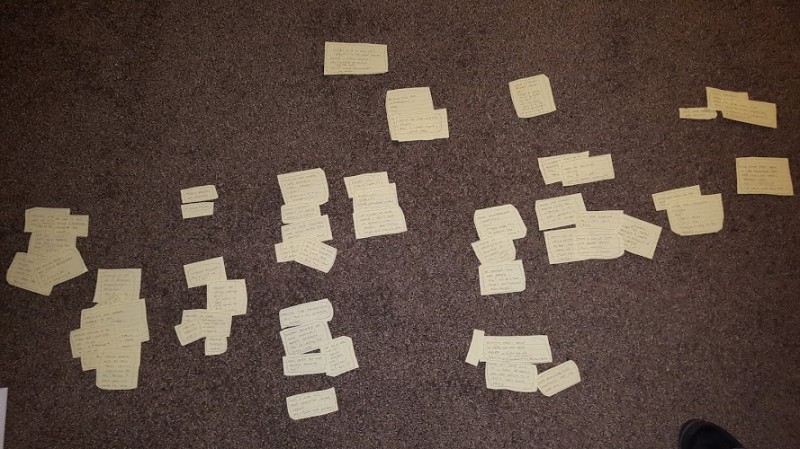
Time to organize them:
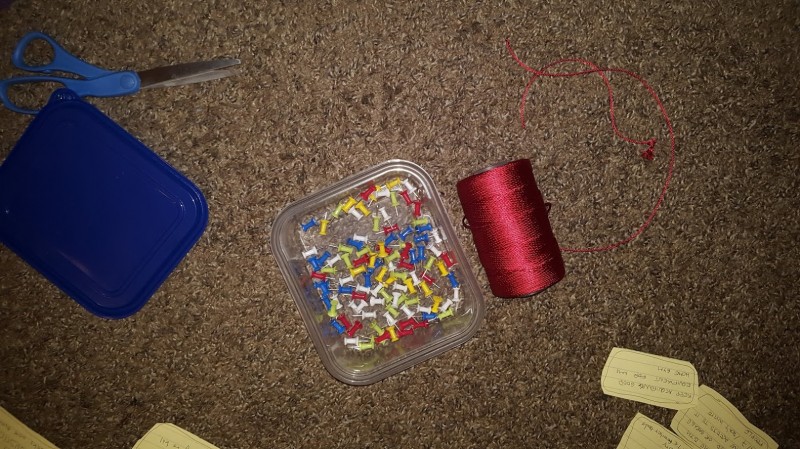
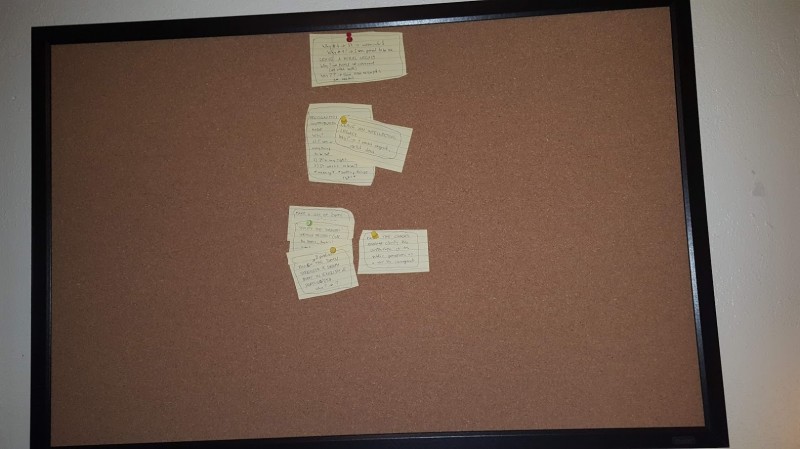
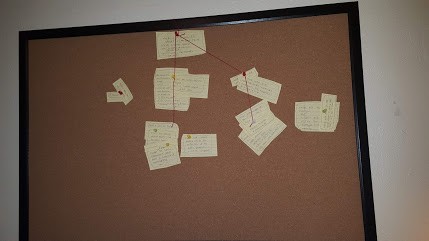
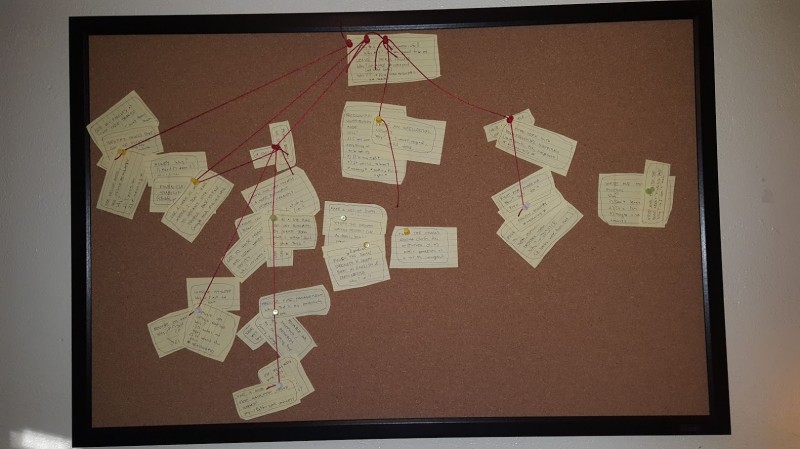
Some "tentative goals" must be discarded. For example: fostering baby goats and raccoons, or punching assholes. Better settle for dogs and cats. As for vengeance, bad idea: not only it’s a waste of energy but also illegal. I did write them down and discarded them, though (you must be conscious you were ruminating over unrealistic goals to eliminate them).
Having done all that, it was time to identify the inter-relationships between goal hierarchies:
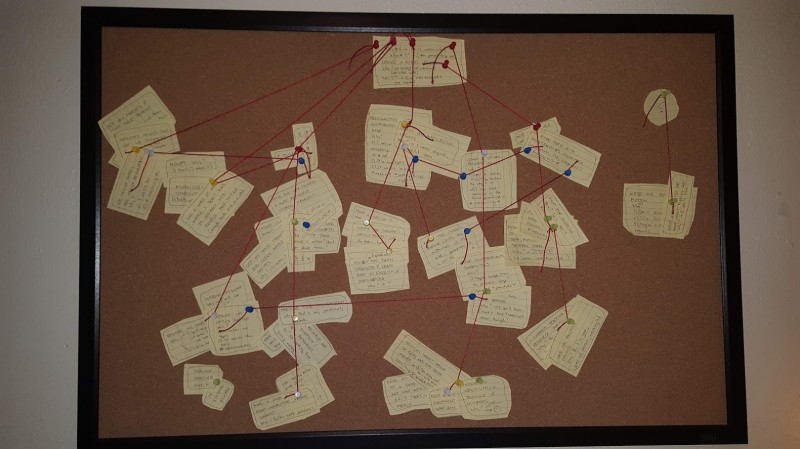
When will it be done? Never. Goals must be adjusted and re-adjusted, always. I will keep working on them, ordering them, evaluating them, re-writing them and, most importantly, monitoring them.
Journaling covers that. A journal is a “daily report” that helps you emphasize progress and be reminded of the goal structure.
Those of you who know me may try to zoom in on the board and will notice that athletic goals are not high on the structure and pale in comparison to other goals. That’s how life is supposed to be: I achieved my athletic goals because they were nested under higher hierarchy goals. Competitive lifting had a very specific space in my motivational architecture. Whatever it will be from now on, if it is at all, it is not the same. That’s how lower level goals work: once you achieve them, you evaluate your performance, and that goal is usually terminated (unless it is an ongoing goal).
In the next article for this column, I will review the literature on goal setting and connect the conceptual dots.
For now, many of the concepts employed here are described in the articles below:
- Why Do You Lift — Meaning, Identity, Hope and Passion
- Why Do You Lift — Defining Passion
- Why Do You Lift — Defining Hope, Motivation, and Risk
- Why Do You Lift — What the Absence of Motivation Teaches Us (Suicide)
- The Role of Grit in Sport Performance
- The Role of Mental Toughness in Sport Performance
- The Role of Self-Regulation and Control in Sport Performance










